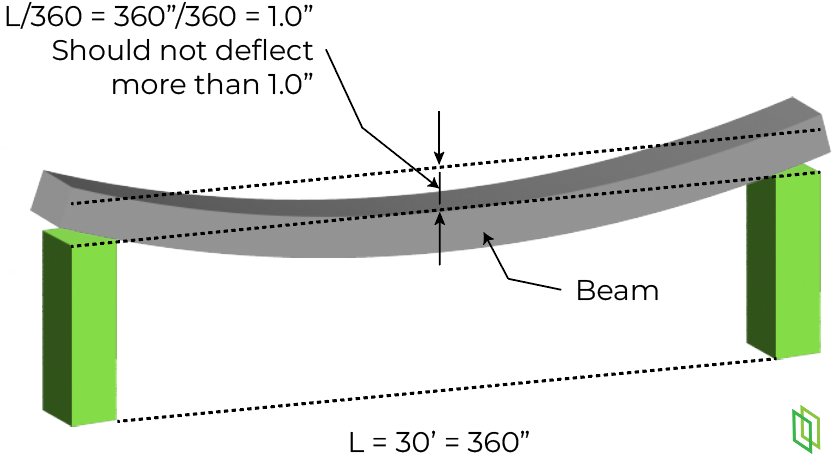L/360 Rule: Ensuring the Integrity of Glazing Systems in Building Design
The L/360 rule is a critical guideline in structural engineering, dictating the maximum allowable deflection for a beam or structural member under load. This rule ensures that structures are robust enough to support expected loads without excessive bending or deflection, which could compromise the structure’s integrity or aesthetic appeal.
In the context of L/360, “L” represents the span length of the beam or structural member, essentially the distance between two points of support, like the length of a beam between two columns. The “360” denotes a divisor, establishing a fraction of the span that determines the maximum permissible deflection. For example, if a beam spans 18 feet (or 216 inches), applying the L/360 rule (216 inches / 360) calculates to a maximum allowable deflection of 0.6 inches under live load conditions, such as people, furniture, or snow.
Importance to Glazing Systems and Building Movement
The L/360 rule’s significance extends into the realm of glazing systems and their design within modern buildings. Glazing systems, including windows, curtain walls, and storefronts, are not merely aesthetic features; they play a crucial role in a building’s environmental control, lighting, and energy efficiency. However, these systems are inherently less flexible than other structural components, making them more susceptible to damage from excessive deflection or building movement.
Incorporating the L/360 rule into the design of glazing systems is essential for several reasons:
- Preventing Glass Damage: Glass is a brittle material that can suffer from cracks or breakage when subjected to undue stress or deformation. By adhering to the L/360 rule, engineers can limit the deflection of structural supports for glazing systems, thereby reducing stress on the glass components.
- Maintaining Seal Integrity: Many glazing systems rely on seals and gaskets to prevent water and air infiltration. Excessive deflection can compromise these seals, leading to leaks, drafts, and decreased energy efficiency. By ensuring deflection limits are within acceptable ranges, the integrity of seals is preserved.
- Aesthetic Considerations: Visible bending or sagging in the structural elements supporting glazing systems can be unappealing, detracting from the building’s overall appearance. Compliance with the L/360 rule helps maintain the intended architectural lines and aesthetics.
- Operational Functionality: For operable windows and doors, excessive deflection can hinder proper functioning, making them difficult to open or close. By controlling deflection, the smooth operation of these components is assured.
Given the interplay between building movements, structural integrity, and the performance of glazing systems, the L/360 rule becomes a linchpin in ensuring that the entire system works harmoniously. It allows architects and engineers to design buildings that not only meet aesthetic and functional requirements but also adhere to safety standards, ensuring that glazing systems remain effective and durable over the life of the building. This holistic approach to design, considering both structural and architectural elements, underscores the importance of the L/360 rule in the successful integration of glazing systems within modern construction.

